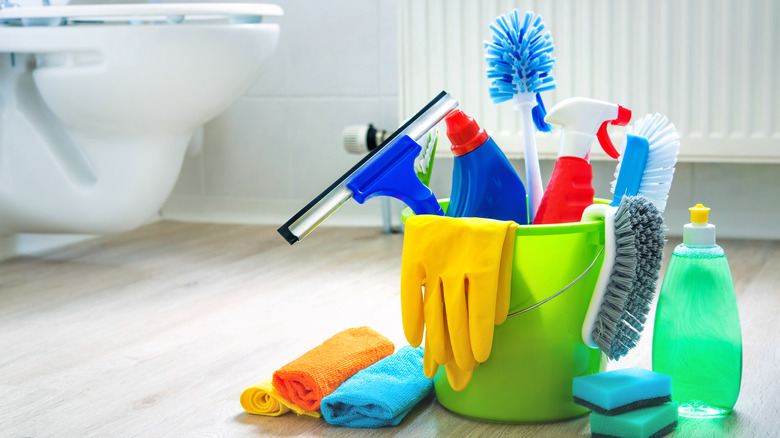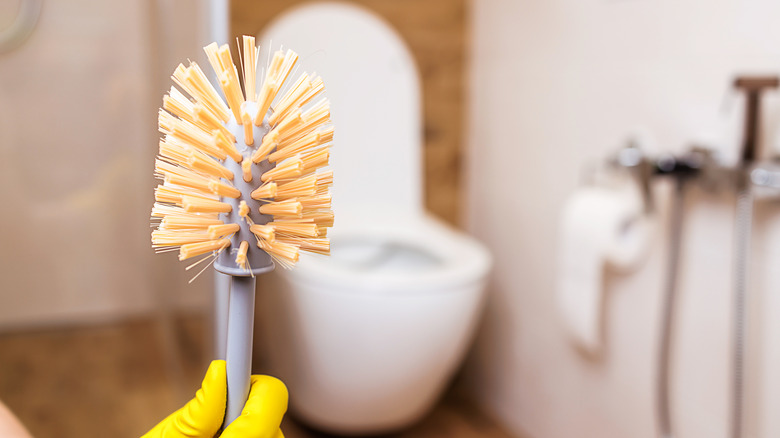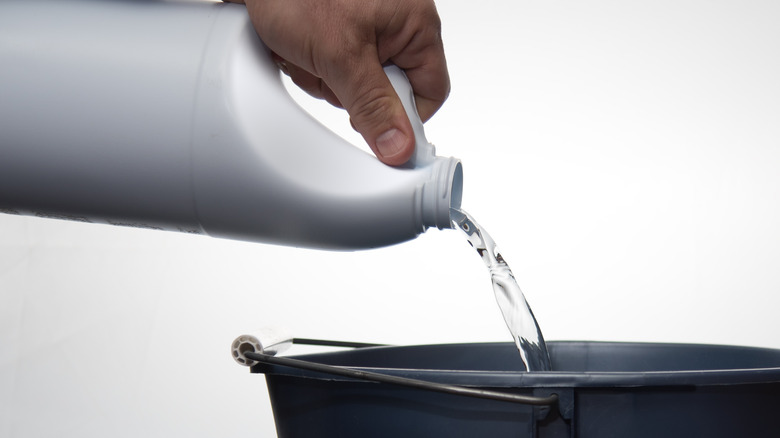The Most Important Thing You Are Forgetting To Clean In Your Bathroom
From morning showers to sick days and makeup application sessions, our bathrooms are some of the most highly used and germ-filled rooms in our homes. With so much daily and weekly activity, it's important to keep up with a regular bathroom cleaning schedule. An expert at the University of Arizona, Dr. Kelly Reynolds, recommends cleaning your bathroom at least once per week, focusing most on towels, showers, and bathtubs (via Self). These surfaces harbor some of the most undesirable fungi and bacteria colonies, so it's important to tackle them regularly to prevent skin and respiratory infections.
Of course, most people know that they should clean their bathrooms, but what about cleaning the tools you use to clean your bathroom? That's right; your bathroom cleaning supplies might actually be some of the filthiest items in your home. If you cleaned your toilet with a rag after all, would you leave it lying on the bathroom floor? Probably not!
You should be cleaning your toilet brush
Even though we know how grungy they are, most people still store their dirty toilet brushes right next to their freshly cleaned toilets. Storing the toilet brush in your bathroom might seem like an easy and convenient way to keep your toilet bowl spot-free, but it could be making your whole bathroom filthier, and may not be the best choice for your health if you're not cleaning it.
Perhaps it comes as no surprise, but your toilet brush can harbor some pretty nasty stuff. Beyond the generalized "ick" factor that comes with cleaning them, toilets and toilet brushes are covered in germs like salmonella, E. coli, Streptococcus, and even parasites, notes Get Holistic Health. Bacteria reproduce and spread faster than almost anything else on the planet; according to Pacific Northwest National Laboratory, the population of a bacterial colony nearly doubles every 4 to 20 minutes. This means that even if you clean and sanitize all of the walls and surfaces of your bathroom, leaving the dirty toilet brush on the floor will cause bacteria to re-spread. All of those germs will be blown around by drafts and water droplets. Yuck.
Sanitize your brush every 2 to 3 weeks
Sanitizing your toilet brush is the best way to avoid re-introducing bacteria into your clean bathroom. If you can, try to sanitize your toilet brush after every use, or commit to a weekly schedule if you use it often, suggests Maid For You. This should be enough to keep harmful pathogens at bay. Luckily, you don't need any special chemicals to sanitize your toilet brush, just bleach, warm water, and a large plastic bucket.
To create a sanitizing solution, the Centers for Disease Control and Prevention recommends mixing 5 tablespoons (about 1/3 cup) of bleach per gallon of warm water. Next, stir the bleach solution with your toilet brush and lay it down to soak in the bucket for at least a minute of contact time with the bleach, which is usually enough to kill all of the germs. Of course, you can let the brush soak as long as you'd like, but beware that the bleach solution won't be as effective after sitting for 24 hours. When your toilet brush and caddy are done soaking, gently tap off the excess liquid and, if weather permits, allow them to dry in the sun before bringing them back into your bathroom.


